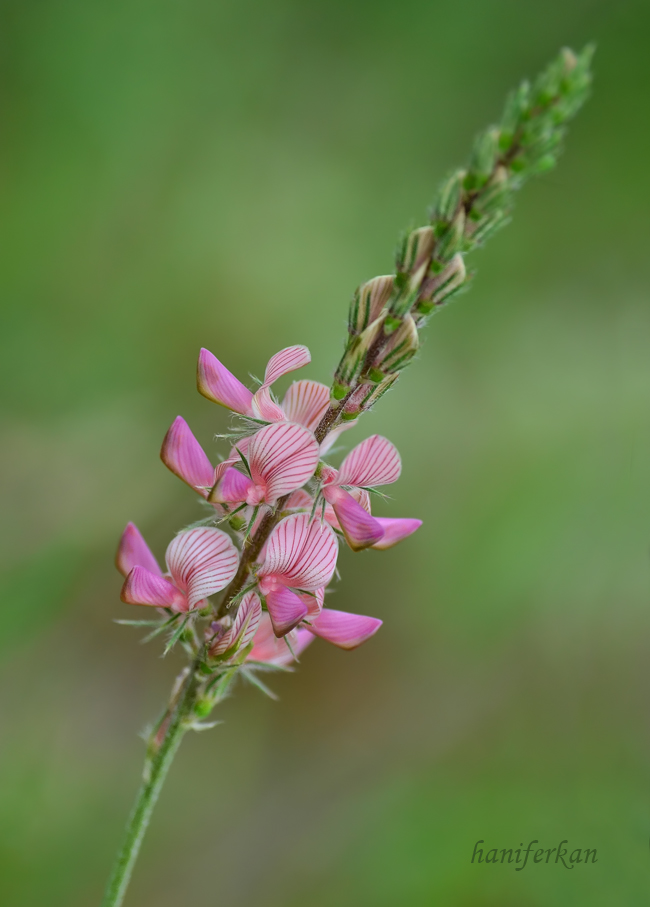Onobrychis hajastana: Red Data Book of Armenia

EN B 1 ab(i,ii,iii,iv) + 2 ab(i,ii,iii,iv)
Category. Endangered species. The extent of occurrence and the area of occupancy are less than 500 km2. It was not included in the first edition of the Red Data Book of Armenia. It is not included in the Annexes of CITES and that of the Bern Convention.
Description. Perennial herbs. Stems 25–70 cm. Leaflets 4–8–paired, narrowly linear, 10–30 x 1–2 mm. Peduncles together with inflorescence 7–25 cm long; inflorescence elongating agter flowering. Calyx appressed pilose. Corolla pinkish–white to reddish–pink; flag glabrous, 6–10 mm long. Beans appressed pilose; disc and crest with long prickles.
Distribution. In Armenia it grows in Gegham (surroundings of Geghard, Zar, Qyankyan, Gelaysor villages) and Yerevan (Djrvezh, Voghchaberd, Zovashen, Garni) floristic regions. EOO is 340 km2, AOO is 20 km2, the number of locations is 3. Besides Armenia the species grows in Nakhichevan, North–East Anatolia.
Ecological, biological and phytocoenological peculiarities. Grows in lower and middle mountain belts, at the altitude of 800–1850 meters above sea level, in the steppes, among phryganoid vegetation. Flowering from June to July, fruiting from July to August.
Limiting factors. Restricted extent of occurrence and area of occupancy, small density of the population, loss/degradation of habitats caused by land development.
Conservation actions. Part of the population grows in "Erebuni" and "Khosrov Forest" State Reserves. Necessary: monitoring of the population state.
Suggestions
 The Ministry of Environment sent a letter international partners to draw their attention to the real danger of environmental disasters as a result of Azerbaijan's large-scale aggression towards the territory of Armenia
The Ministry of Environment sent a letter international partners to draw their attention to the real danger of environmental disasters as a result of Azerbaijan's large-scale aggression towards the territory of Armenia
 Vicia pisiformis: Red Data Book of Armenia
Vicia pisiformis: Red Data Book of Armenia
 Vavilovia formosa: Red Data Book of Armenia
Vavilovia formosa: Red Data Book of Armenia
 Trigonella capitata: Red Data Book of Armenia
Trigonella capitata: Red Data Book of Armenia
 Trigonella astroides: Red Data Book of Armenia
Trigonella astroides: Red Data Book of Armenia












